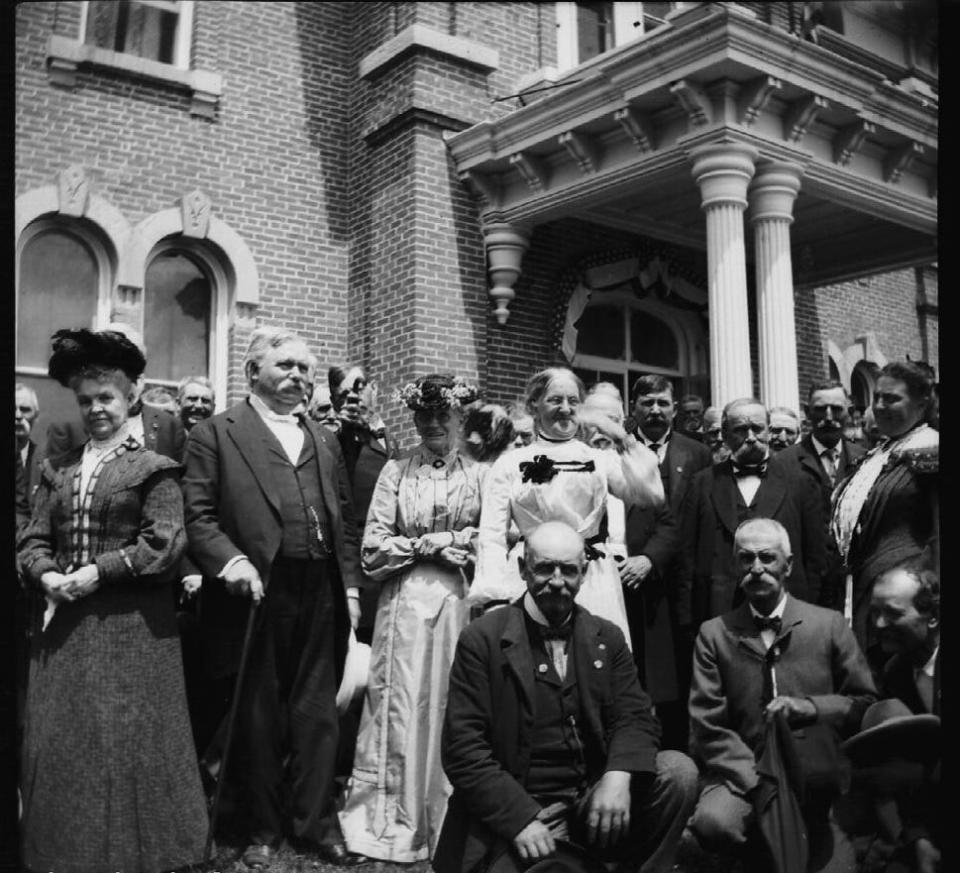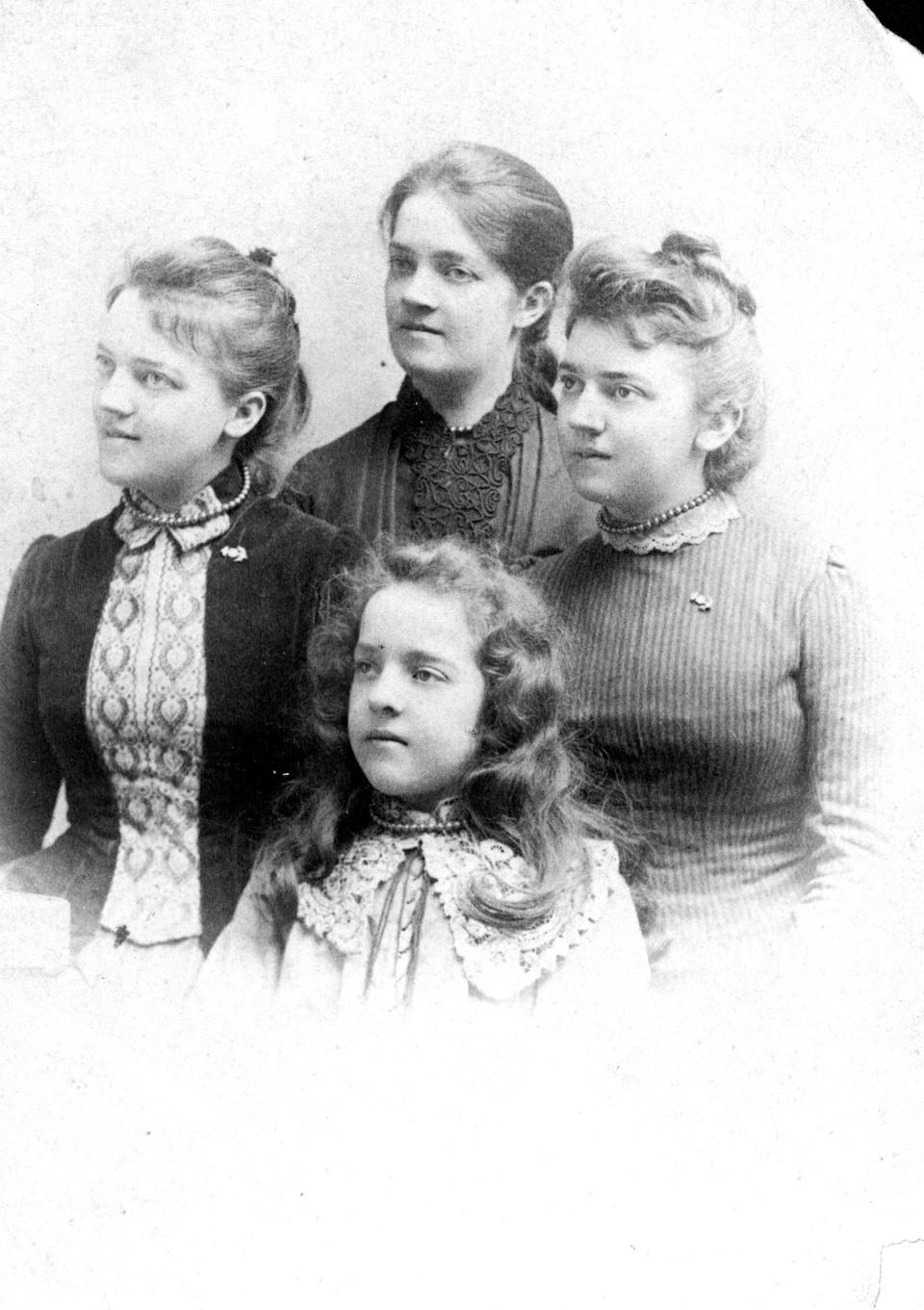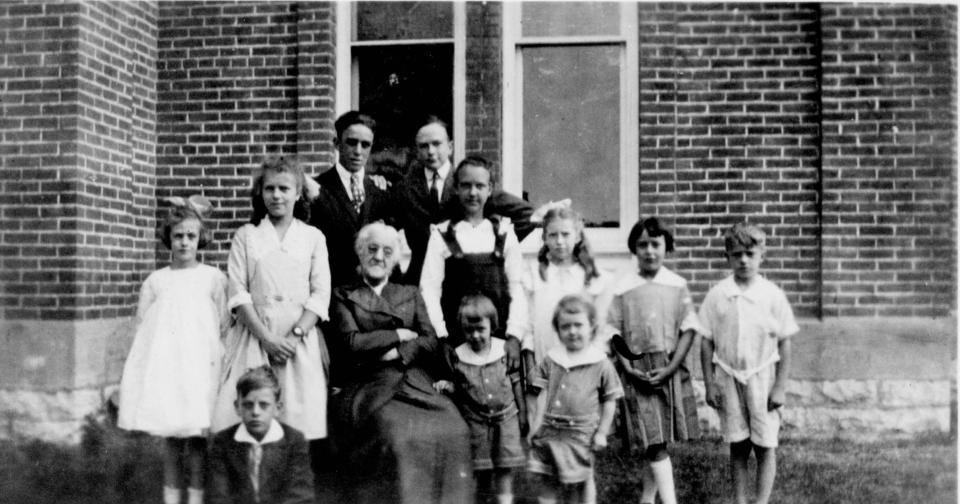Iowa History Month: How Anna Larrabee became a symbol of traditional family values
- Oops!Something went wrong.Please try again later.
When Anna Larrabee died in December 1931, newspapers across the state referred to her with the moniker of “Iowa’s Ideal Mother.” While she championed many traditional causes in her lifetime and her life reflected service to family, community and the state, she wondered about other possibilities later in her life.
In 1874, William and Anna Larrabee built a home and farm on a hill overlooking the picturesque town of Clermont, Iowa, and called it “Montauk.” William Larrabee would be entering his sixth year as Iowa senator and, in another decade, would become governor of Iowa. William was a formidable political figure in the late 1800s, but would not have accomplished all that he did without his wife, Anna, by his side.

Anna came to Fayette County, Iowa, with her family in 1854 at the age of 12. Life would have been difficult in the early years of the farm, and Anna, being the oldest child, her duties would have been plentiful. She assisted her mother in caring for her four siblings while also helping her father in the fields with plowing. At the age of 16, Anna began teaching at the local school in the village, making $25 a month. She was musically talented and could sing as well as play the piano, organ and melodeon.
By every account, Anna was a loving, caring and devoted person. As first lady of Iowa, she was known throughout the state for “her ability to meet all demands, to grasp large affairs, to share in her husband’s responsibilities” and to run and maintain both a household at Montauk as well as in Des Moines. She believed in a woman’s role in keeping up a household and raising children, and saw this as her most important duty.

In a March 1905 Des Moines Register story, Anna remarked, “I love to make children happy. It is through them the most good for humanity can be accomplished.” She thought women should be educated on state affairs, but did not support women's suffrage. She thought that giving women the right to vote would erode family values.
In the early 1900s, Anna and her husband began to discuss building and donating a school in Clermont. Anna researched the latest in educational instruction and made a scientific study of school needs. She traveled across the country, as well as Mexico and Europe to look at the newest schools to ensure her school in Clermont would be what she called the “Ideal School.” William Larrabee passed away in 1912, the year ground was broken for the school. Over the next 18 months, Anna oversaw the school’s construction and its final touches. She donated the building and land to Clermont at a formal dedication on Jan. 30, 1914.
After William passed, Anna oversaw their farm in Clermont and managed their thousands of additional acres of farmland across the state. She did so for the next 19 years until her death on Dec. 30, 1931.

During her lifetime, Anna was superintendent of the Union Sunday School in Clermont for 30 years, and a strict prohibitionist who was active in the Clermont Ladies Aid Society, Women’s Christian Temperance Union, Daughters of the American Revolution, Delta Gamma and the Mayflower Society. In 1892, she became president of the Iowa Women's Auxiliary to the American Red Cross and was acquainted with Clara Barton, the organization’s founder.
Anna was a loving grandmother to 11 grandchildren and had an active role in raising three of them after her daughter, Helen, died. In her older age she enjoyed searching for fossils and told a reporter in 1927 that if she were young again she would have wanted to become an archaeologist. Anna Larrabee had willingly filled the traditional role of a woman in her lifetime, but recognized that the future offered even more.
Hannah Frederick is historic site coordinator at the Montauk Historic Site operated by the State Historical Society of Iowa, which provided this essay as part of a series for Iowa History Month. For more information, visit history.iowa.gov/history/sites/montauk-historic-site.
March is Iowa History Month
To celebrate Iowa History Month, the Register has published weekly essays from leading state historians.
This article originally appeared on Des Moines Register: Iowa History Month: How Anna Larrabee championed traditional values

